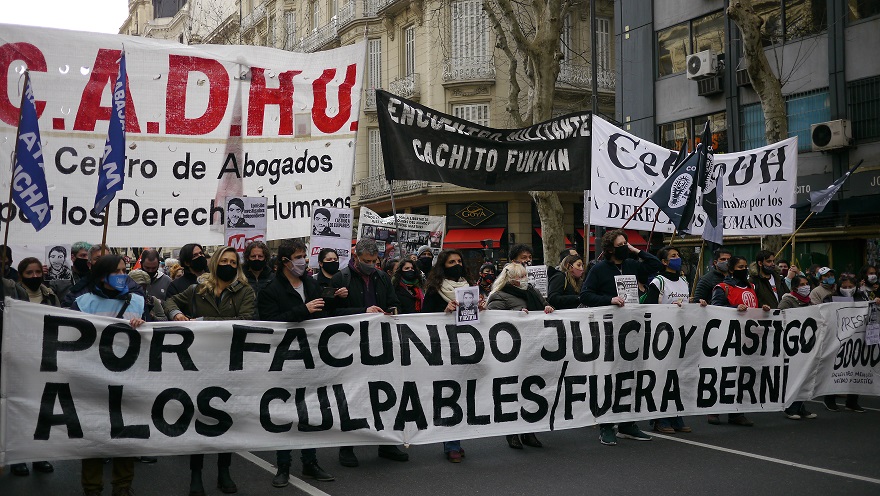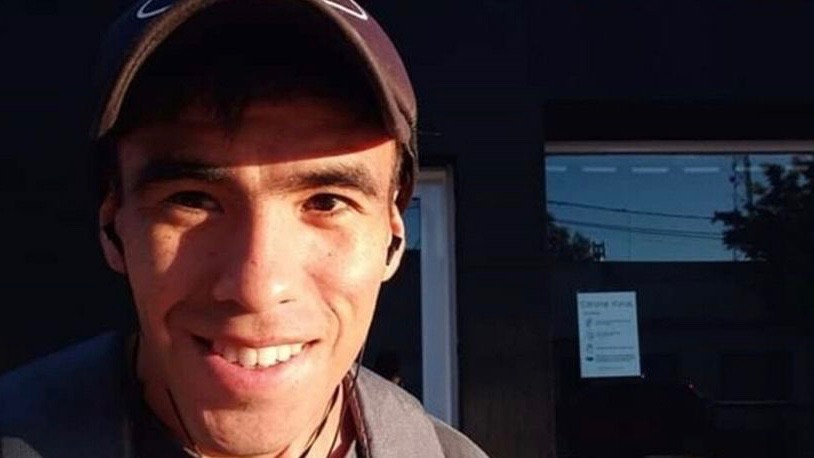After four months of disappearance, on Wednesday September 2, it was confirmed that the body found last month is Facundo Astudillo Castro. 22-year-old Castro had left his home town of Pedro Luro on April 30 to travel to Bahía Blanca, in the south of the Buenos Aires province of Argentina.
Three and a half months after his disappearance, on August 16, a body had been found in a skeleton state in a wetlands area, along with a sneaker of a young person and tracks of a 4×4 truck. Finally, this week the DNA results confirmed that the body was Facundo.
In response to the confirmation that the body was Facundo, thousands of people took to the streets in Buenos Aires on September 3 to demand justice for Facundo and denounce the Buenos Aires police and the provincial security minister Sergio Berni.
The truth about what happened to him and how he died, will take more time. The experts calculate that it will be over a month. Still, the principal evidence of the investigation about his whereabouts point to the Buenos Aires police.
“They have ruled out a suicide, they have ruled out an accident, it is a body that died by suffocation, it was a traumatic death, they killed him. Now they are trying to determine if it was through submersion or by strangulation,” his mother, Cristina Castro, expressed after the experts gave the first report on the results of the autopsy.
Facundo’s mother has already met with the Argentine president Alberto Fernández, and also with the governor of the Buenos Aires province, Axel Kicillof. Both leaders stated that they “will not not cover up anyone,” in a clear message to the police.
However, there is a problem that is uncomfortable for both Fernández and Kicillof: the minister of Security of the province, Sergio Berni, is a former member of the military that sustains that the members of the force “are innocent” and supports the theory of a possible accident, lending his support to the hypothesis that the prosecutor on the case, Santiago Ulpiano Martínez, wants to push.
Due to the pressure of this sector, the investigation could go in two very different paths: while the family and the lawsuit places responsibility on the police, the judge of the case, María Gabriela Marrón, the prosecutor and the minister, seek to deny the participation of the public force in the disappearance of Facundo Astudillo Castro, talking about a “possible accident.”
In response to the confirmation that the body was Facundo, thousands of people took to the streets in Buenos Aires on September 3 to demand justice for Facundo and denounce the Buenos Aires police and the provincial security minister Sergio Berni. Protesters also denounced the continuation of forced disappearances and selective assassinations in Argentina despite being in democracy for the past 37 years. The practice was widely used during the last civic-military dictatorship in the country wherein 30,000 were forcibly disappeared and assassinated.

The key evidence that points to the police
There are three witnesses that say they say when Facundo was put into a police car in the town Mayor Buratovich. The police officers refused to give statements in the first days during the search.
Also, the stories told by the uniformed officers do not coincide between each other and there is evidence that complicates their participation in the case. There are telephone chats where the official Mario Gabriel Sosa tells his fellow officer, Jana Curuhuinca, to “remain calm” because they “had done what they had to do.”
Another official, Siomara Flores, deleted her Whatsapp account on May 8, a week after the disappearance of Facundo. Also, that same day, a phone of the police was traced to be only 800 meters away from the area where the body of Facundo was found. The information was revealed through GPS records of the police vehicle.
At the same time, the public force has not been able to explain how a personal item of the disappeared youth mysteriously appeared in the quarters of a police station in Teniente Origone. The item was a souvenir that Facundo’s grandmother had given him. His mother immediately recognized it because she has an identical one at home.
Finally, the body found in the wetlands area known as “Cola de Ballena” located some 15 kilometers from Bahía Blanca, was in an advanced state of decomposition, almost without human flesh. However, a few meters away, a tennis shoe of Facundo was found in almost perfect state.
The family and lawyers of his mother think that the body could have been planted. “It is a body that has been in a saltwater wetland, face down, it is not a deep place, nobody can die or commit suicide in this way, if they are there someone had to put them there,” expressed the lawyer working on the case, Leandro Aparicio, on the day that the body appeared.





